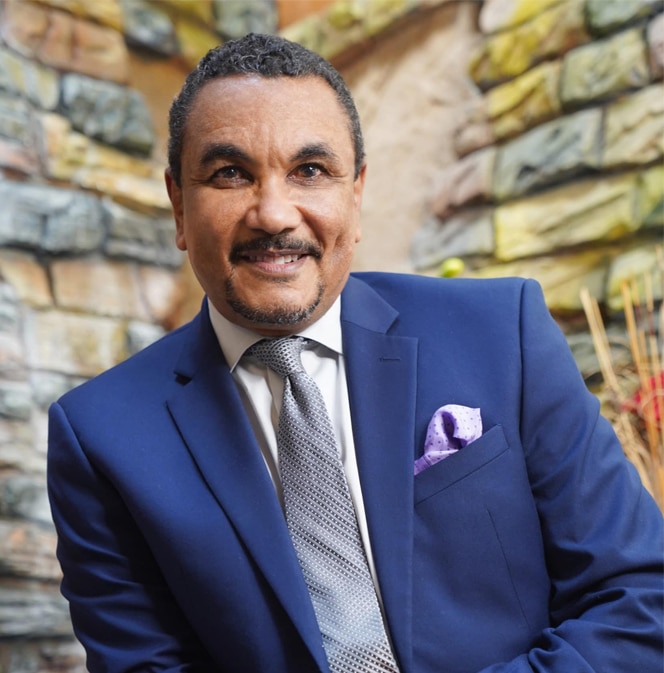
A skin cancer diagnosis can be scary but expert Mohs treatment for skin cancer can help you successfully recover and get back to your life. Find your board-certified Mohs surgeon in Orlando at Hillcrest Plastic Surgery.
What is Mohs Skin Cancer Removal and Reconstruction Surgery?
Mohs micrographic surgery is a relatively minimally invasive procedure that involves the gradual removal of cancerous skin tissue from the affected area. This tissue is then examined under a microscope to confirm the presence of cancer cells. If skin cancer is detected, the surgeon will continue the excision and examination process until no further cancer is found.
To ensure your skin cancer is effectively removed without compromising your appearance, a skilled Mohs reconstructive plastic surgeon in Orlando is essential. A plastic surgeon like Dr. Kenrick Spence is highly skilled in performing delicate surgical procedures with minimal damage to surrounding structures, and their cosmetic expertise further aids in minimizing the appearance of scarring or other effects of the surgery. His expertise in both reconstructive and cosmetic surgery means they can address both functional and aesthetic concerns that develop after skin cancer removal.
Whether your skin cancer has formed on your face, neck, arms, chest, or some other obvious location, our Mohs skin cancer reconstruction specialists at Hillcrest Plastic Surgery can help you overcome cancer and get back to your life.
How Effective is Mohs Skin Cancer Surgery?
Mohs skin cancer removal in Orlando is among the most effective means of treating many forms of skin cancer, including certain types of melanoma. It has up to a 99% cure rate for new cases of Basal Cell Carcinoma (BCC) and Squamous Cell Carcinoma (SCC), the two most common forms of skin cancer. In instances where skin cancer is recurrent, the success rate is between 90% and 95%.
Mohs treatment for skin cancer is also highly effective for melanoma which has not metastasized beyond the skin. These early stages of melanoma can be removed using a similar technique to BCC and SCC. However, more time is necessary to determine if cancerous cells are present in examined tissues, so the process may take a few days.
How Long Does Recovery Take?
Recovering from skin cancer removal surgery can take a few weeks, depending on the size and area of the excision. In most cases, patients heal after Mohs surgery within 2-4 weeks. The extended healing process, including scar fading, can take a few months to a year.
During the first few days following your Orlando Mohs skin cancer removal and reconstruction surgery, you may experience some swelling, redness, and mild discomfort. Be sure to keep the wound clean and follow any aftercare instructions provided by your Mohs surgeon. Sutures are typically removed within 5-7 days when removal occurs on the face; other areas may take up to 14 days before sutures can be removed.
Recovering from skin cancer removal surgery can take a few weeks, depending on the size and area of the excision. In most cases, patients heal after Mohs surgery within 2-4 weeks. The extended healing process, including scar fading, can take a few months to a year.
During the first few days following your Orlando Mohs skin cancer removal and reconstruction surgery, you may experience some swelling, redness, and mild discomfort. Be sure to keep the wound clean and follow any aftercare instructions provided by your Mohs surgeon. Sutures are typically removed within 5-7 days when removal occurs on the face; other areas may take up to 14 days before sutures can be removed.
Why Choose Hillcrest Plastic Surgery for Mohs Surgery
As a highly-trained cosmetic surgery specialist, Dr. Spence performs Mohs surgeries with two goals in mind: to leave his patients cancer-free and to maintain the integrity of their appearance as much as possible. His finely tuned skills as a plastic surgeon mean less damage and lower chances of significant scarring.
Dr. Kenrick Spence has over 25 years of experience helping to transform the lives of our patients. With a compassionate, detail-oriented approach to each case, Dr. Kenrick Spence will ensure you get the best possible results through a fully personalized surgical experience. We understand that looking and feeling like yourself is an important part of skin cancer recovery, so we keep your aesthetic results top-of-mind while focusing on the successful excision of all cancerous tissues.
In situations where Mohs surgery has been previously performed and scar revision is necessary to help restore your confidence, our surgeons take the time to determine what approach is best for you. Scar revision can involve surgical and non-surgical interventions, depending on your specific case and goals. We understand how scarring can impact your self-confidence, and we’re here to help you get the restorative results you deserve.
At Hillcrest Plastic Surgery in Orlando, FL, our compassionate team of renowned, board-certified surgeons and medical professionals is here to guide and support you through every step of your skin cancer recovery. We prioritize patient-centered care from consultation through full recovery, so you feel assured that you’ll receive the highest quality care at every stage.
Start Your Recovery Journey Today at Hillcrest Plastic Surgery
If you or a loved one has recently been diagnosed with skin cancer, or you’ve previously had Mohs skin removal surgery and you’d like to explore your options for reducing the appearance of scarring, reach out to Hillcrest Plastic Surgery today at 407-999-2585 or request an appointment online. Our team is ready to help you leave skin cancer in the past and get started toward a healthier, happier future.



